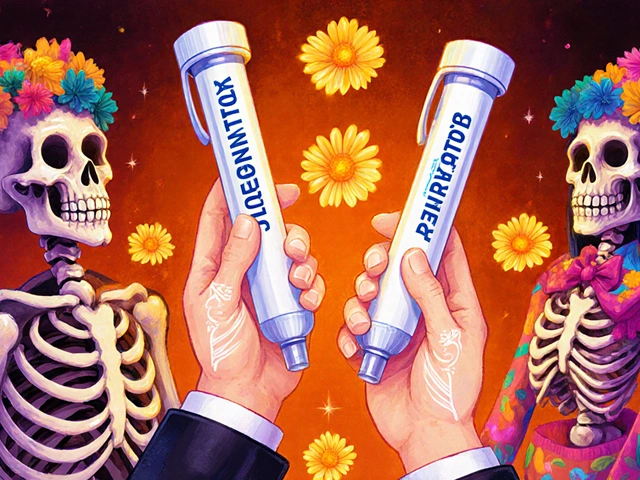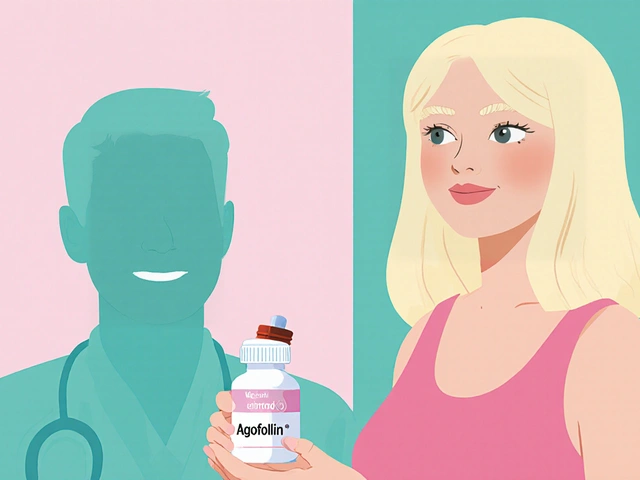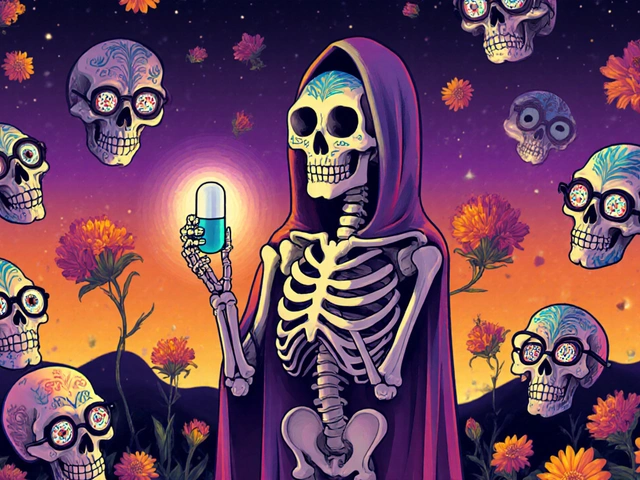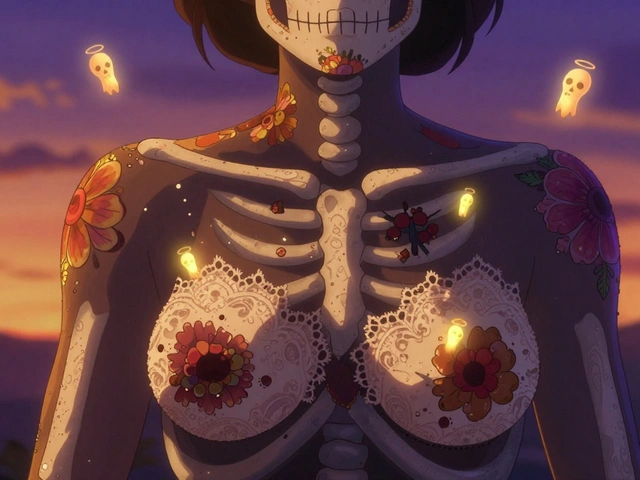
What Rosacea Really Looks Like
Facial flushing isn’t just blushing after a spicy meal or a glass of wine. For people with rosacea, it’s a persistent, unpredictable flare-up that can turn the cheeks, nose, or forehead bright red for hours-or even days. It’s not just cosmetic. The heat, burning, and visible blood vessels make daily life harder. You might avoid social events, feel self-conscious in photos, or skip outdoor activities because the sun triggers a flare. Rosacea affects about 16 million people in the U.S. alone, mostly between 30 and 60 years old. Women are diagnosed more often, but men tend to get worse symptoms, like a thickened nose (rhinophyma), which happens in 5-10% of cases.
The earliest sign? Flushing. About 75% of people with rosacea experience it first. Normal blushing fades quickly. Rosacea flushing lingers. It’s triggered by things like hot coffee (over 60°C), red wine, spicy food with capsaicin, stress, UV rays (even on cloudy days), or cold wind. The skin’s blood vessels overreact, staying dilated longer than they should. Over time, this becomes permanent redness-a sunburn that never goes away.
Why Topical Antibiotics? It’s Not Just About Bacteria
When redness turns into bumps and pimples-called papules and pustules-you’re likely dealing with papulopustular rosacea, the second most common subtype. It affects about half of all rosacea patients. At first glance, it looks like acne. But it’s not. No blackheads. No cysts. Just inflamed red bumps, often around the nose and cheeks.
For years, doctors thought this was a bacterial infection. That’s why antibiotics were prescribed. Turns out, it’s more complex. The real culprits are tiny mites called Demodex folliculorum that live on everyone’s skin. In rosacea, their numbers spike, triggering an immune response. Plus, there’s chronic inflammation, leaky skin barriers, and nerve overactivity. Topical antibiotics don’t just kill bacteria-they calm inflammation and reduce mite populations.
The Top Three Topical Treatments Compared
Not all topical treatments are the same. Here’s what actually works, based on clinical data and real-world use:
| Treatment | Active Ingredient | Reduction in Lesions | Time to Noticeable Results | Common Side Effects |
|---|---|---|---|---|
| Ivermectin 1% cream | Ivermectin | 76% after 12 weeks | 4-8 weeks | Burning (22%), dryness (18%) |
| Metronidazole 0.75% gel | Metronidazole | 60-70% after 6-9 weeks | 6-12 weeks | Burning (15%), dryness (12%) |
| Azelaic acid 15% gel | Azelaic acid | 68-73% after 15 weeks | 8-12 weeks | Stinging (20%), redness (10%) |
Studies show ivermectin works faster and more effectively than metronidazole. In a 2019 trial with 900 patients, ivermectin reduced lesions by 76%-22% better than metronidazole. That’s why many dermatologists now recommend it as a first-line choice. But metronidazole is still a solid option, especially if your skin is sensitive. Azelaic acid doesn’t have antibiotic properties, but it’s great for reducing redness and swelling without the risk of resistance.

What to Expect When You Start Treatment
Don’t expect miracles in a week. These treatments take time. Most people don’t see improvement until 4-6 weeks. Full results? That’s 12-16 weeks. That’s a long time to wait when your face feels hot and angry. It’s why so many people quit too soon.
Some users report an initial flare-up. One Reddit user wrote: “First two weeks of metronidazole made my face extremely red and flaky-I almost quit.” That’s not unusual. The skin is reacting to the new product. If the irritation is mild and doesn’t worsen, keep going. If it turns into stinging, peeling, or pain, pause and talk to your dermatologist.
Application matters. Use a pea-sized amount for your whole face. Too much doesn’t help-it just irritates. Apply to clean, dry skin. Wait 15 minutes before moisturizer or sunscreen. Some people find applying to slightly damp skin reduces stinging. Others swear by a ceramide moisturizer before or after to protect the skin barrier.
Why Topical Antibiotics Don’t Fix Flushing
This is critical: topical antibiotics help with bumps and pimples. They do almost nothing for the redness or flushing. If your biggest problem is your face turning bright red when you walk into a warm room, you need something else.
For persistent redness, dermatologists turn to brimonidine (Mirvaso) or oxymetazoline (Rhofade). These are vasoconstrictors-they shrink blood vessels on the skin’s surface. They work fast, often in under an hour. But the effect fades after 12 hours, so you need to use them daily. They’re not a cure. They’re a tool to manage symptoms.
That’s why treatment is layered. Topical antibiotic for bumps. Vasoconstrictor for redness. Sunscreen every day. Gentle cleanser. Trigger journal. No single treatment fixes everything.

Real People, Real Results
On Drugs.com, ivermectin has a 7.2 out of 10 rating from over 1,200 reviews. Sixty-two percent say it helped. One user said: “After 8 weeks of Soolantra, my facial bumps reduced by 80% with minimal irritation.” That’s the kind of result people remember.
But 16% say it didn’t work. Reasons? Too slow. Too expensive. Skin got worse before it got better. The National Rosacea Society found 45% of patients quit topical antibiotics within six months-not because it failed, but because they didn’t stick with it.
Here’s what works for those who stick with it:
- Keep a trigger diary: Note what you ate, drank, or did before a flare-up.
- Avoid alcohol, especially red wine.
- Use mineral sunscreen with zinc oxide (10-20%) every morning.
- Wash with a fragrance-free, pH-balanced cleanser (5.5-7.0).
- Don’t scrub. Don’t use exfoliants. Don’t use alcohol-based toners.
Cost, Access, and What’s Next
Topical rosacea treatments aren’t cheap. Without insurance, you’re looking at $300-$400 a year. Ivermectin is pricier than metronidazole, but many insurers cover it now because it’s more effective. Telehealth services like Curology offer personalized plans starting at $45/month, which includes prescription creams and dermatologist support.
The market is shifting. Ivermectin now holds 35% of the topical rosacea market, surpassing metronidazole for the first time. New combinations are coming-like ivermectin with hydrocortisone-which showed 85% lesion reduction in early trials. That’s promising. But the core message hasn’t changed: consistency beats speed.
When to See a Dermatologist
If you’ve had facial flushing for more than a few months, or if bumps keep coming back, see a specialist. General practitioners rarely have the tools or experience to manage rosacea properly. A dermatologist can confirm the subtype, rule out lupus or acne, and tailor your treatment.
Also, 50-75% of rosacea patients have eye symptoms-dryness, grittiness, light sensitivity. If your eyes feel off, mention it. Ocular rosacea needs separate treatment.
And if you’ve tried a topical antibiotic for 8 weeks and seen less than 25% improvement? It’s time to switch. Don’t wait another month. Talk to your doctor about ivermectin, azelaic acid, or adding a vasoconstrictor.
Can rosacea be cured?
No, rosacea is a chronic condition, meaning it can’t be cured-but it can be controlled. With the right treatment plan, most people reduce flare-ups dramatically and live without major symptoms. The goal isn’t perfection-it’s managing the condition so it doesn’t control your life.
Do I have to use topical antibiotics forever?
Not necessarily. Many people use topical treatments for 3-6 months until symptoms improve, then reduce frequency to every other day or a few times a week. Some stay on maintenance therapy long-term, especially if triggers are hard to avoid. Your dermatologist can help you find the lowest effective dose.
Is it safe to use topical antibiotics with other skincare products?
Yes, but timing matters. Apply your antibiotic first, wait 15-20 minutes, then add moisturizer or sunscreen. Avoid products with alcohol, menthol, witch hazel, or fragrances-they irritate rosacea-prone skin. Stick to gentle, non-comedogenic formulas. Ceramide-rich moisturizers help repair the skin barrier.
Why does my face get red when I exercise?
Exercise raises body temperature, which triggers blood vessel dilation in rosacea-prone skin. It’s not the sweat-it’s the heat. Try exercising in a cool room, using a fan, or splashing cold water on your face during breaks. Short, frequent workouts are better than long, intense ones.
Can diet really make rosacea worse?
Absolutely. Hot beverages, alcohol (especially red wine), spicy foods, and even chocolate can trigger flushing in many people. But triggers vary. Keep a food and symptom diary for two weeks. You might find that your trigger isn’t what you think. For some, it’s dairy. For others, it’s citrus or vinegar.





There are 10 Comments
Shante Ajadeen
Been using ivermectin for 10 weeks now and my bumps are 90% gone. No more hiding behind makeup when I leave the house. It took patience, but wow, worth it. Just stick with it, even when your skin feels like it's screaming.
dace yates
I’m curious-has anyone tried combining azelaic acid with ivermectin? My derm said it’s fine, but I’m nervous about layering too much. My skin’s so sensitive now I’m scared to breathe on it wrong.
Danae Miley
Let’s be clear: metronidazole is outdated. The data shows ivermectin is superior in both speed and efficacy. If your dermatologist is still pushing metronidazole as first-line, they’re not staying current. This isn’t 2012 anymore.
Charles Lewis
It is imperative to recognize that rosacea is not merely a dermatological concern but rather a complex, multifactorial condition involving neurovascular dysregulation, microbial imbalance, and immune system hyperactivity. While topical agents such as ivermectin and azelaic acid offer significant symptomatic relief, they do not address the underlying pathophysiology, which may include gut-skin axis disruption and chronic low-grade inflammation. Therefore, a holistic approach incorporating dietary modification, stress management, and photoprotection remains foundational to long-term disease control.
Renee Ruth
Ugh. I tried ivermectin. First week? My face looked like a boiled lobster. Second week? I cried in the shower because I thought I’d ruined my skin forever. Now I just use green tinted primer and pretend I’m not a monster. This whole thing is a scam. No one told me it’d feel like my face was being set on fire.
Samantha Wade
Shante, your success story is inspiring. For those feeling discouraged-progress isn’t linear. Ivermectin’s 76% reduction statistic isn’t magic; it’s consistency. Pair it with zinc oxide sunscreen every single day, no exceptions. And if your skin flares, don’t panic-reduce frequency to every other night. You’re not failing. You’re adapting.
Elizabeth Buján
ok so i tried the metronidazole and yeah it burned like hell at first but then after 3 weeks i started noticing my skin wasnt as angry? like… not red all the time? i still get flares when i drink coffee but now i dont feel like i wanna hide. also i started drinking chamomile tea and it helped my chill out? idk if that’s science but my face thinks its magic
Andrew Forthmuller
Just use sunscreen. That’s it. Everything else is noise.
vanessa k
Andrew, you’re right about sunscreen. I used to think it was just for the beach. Now I put it on like I’m putting on deodorant. Morning, no exceptions. And I switched to a mineral one with iron oxide-my redness dropped like a rock. No magic cream did that. Just consistency and a little patience.
manish kumar
As someone from India where spicy food is part of daily life, I struggled for years. I thought rosacea was just a Western problem. But the triggers are universal. I cut out red wine, switched to lukewarm tea, and started using aloe vera gel before my ivermectin. It didn’t fix everything, but it made the burning less brutal. Also, don’t underestimate the power of a fan during meals. Cooling your face while eating helps more than you’d think. It’s not about perfection-it’s about small, sustainable changes that add up over time.
Write a comment
Your email address will not be published. Required fields are marked *